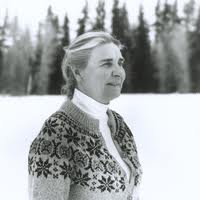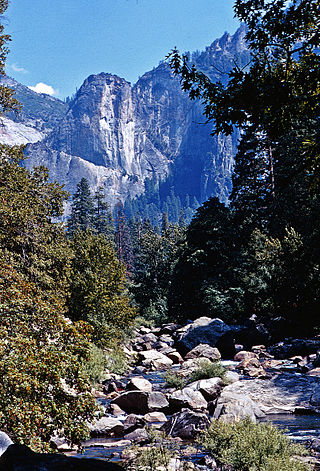Related Research Articles

The organized environmental movement is represented by a wide range of non-governmental organizations or NGOs that seek to address environmental issues in the United States. They operate on local, national, and international scales. Environmental NGOs vary widely in political views and in the ways they seek to influence the environmental policy of the United States and other governments.

An environmentalist is a person who is concerned with and/or advocates for the protection of the environment. An environmentalist can be considered a supporter of the goals of the environmental movement, "a political and ethical movement that seeks to improve and protect the quality of the natural environment through changes to environmentally harmful human activities". An environmentalist is engaged in or believes in the philosophy of environmentalism or one of the related philosophies.
The conservation movement, also known as nature conservation, is a political, environmental, and social movement that seeks to manage and protect natural resources, including animal, fungus, and plant species as well as their habitat for the future. Conservationists are concerned with leaving the environment in a better state than the condition they found it in. Evidence-based conservation seeks to use high quality scientific evidence to make conservation efforts more effective.

Aldo Leopold was an American writer, philosopher, naturalist, scientist, ecologist, forester, conservationist, and environmentalist. He was a professor at the University of Wisconsin and is best known for his book A Sand County Almanac (1949), which has been translated into fourteen languages and has sold more than two million copies.

Margaret Elizabeth Thomas "Mardy" Murie was a naturalist, writer, adventurer, and conservationist. Dubbed the "Grandmother of the Conservation Movement" by both the Sierra Club and the Wilderness Society, she helped in the passage of the Wilderness Act, and was instrumental in creating the Arctic National Wildlife Refuge. She was the recipient of the Audubon Medal, the John Muir Award, and the Presidential Medal of Freedom—the highest civilian honor awarded by the United States.

Archie Fairly Carr, Jr. was an American herpetologist, ecologist, and conservationist. He was a Professor of Zoology at the University of Florida and an acclaimed writer on science and nature. He brought attention to the world's declining sea turtle populations due to over-exploitation and habitat loss. Wildlife refuges in Florida and Costa Rica have been named in his honor.

Environmentalism or environmental rights is a broad philosophy, ideology, and social movement about supporting life, habitats, and surroundings. While environmentalism focuses more on the environmental and nature-related aspects of green ideology and politics, ecologism combines the ideology of social ecology and environmentalism. Ecologism is more commonly used in continental European languages, while environmentalism is more commonly used in English but the words have slightly different connotations.

Wildlife management is the management process influencing interactions among and between wildlife, its habitats and people to achieve predefined impacts. It attempts to balance the needs of wildlife with the needs of people using the best available science. Wildlife management can include wildlife conservation, gamekeeping and pest control. Wildlife management draws on disciplines such as mathematics, chemistry, biology, ecology, climatology and geography to gain the best results.
The Durrell Institute of Conservation and Ecology (DICE) is a subdivision and research centre of the School of Anthropology and Conservation at the University of Kent, started in 1989 and named in honour of the famous British naturalist Gerald Durrell. It was the first institute in the United Kingdom to award undergraduate and postgraduate degrees and diplomas in the fields of conservation biology, ecotourism, and biodiversity management. It consists of 22 academic staff, being six Professors, seven Readers and nine Lecturers and Senior Lecturers, as well as an advisory board consisting of 14 conservationists from government, business and the NGO sector.

The Wilderness Society is an American non-profit land conservation organization that is dedicated to protecting natural areas and federal public lands in the United States. They advocate for the designation of federal wilderness areas and other protective designations, such as for national monuments. They support balanced uses of public lands, and advocate for federal politicians to enact various land conservation and balanced land use proposals. The Wilderness Society also engages in a number of ancillary activities, including education and outreach, and hosts one of the most valuable collections of Ansel Adams photographs at their headquarters in Washington, D.C.

Celia Hunter was an American environmentalist and conservationist. She was conferred the highest award by the Sierra Club, The John Muir Award, in 1991. She was presented the highest award by the Wilderness Society, The Robert Marshall Award, in 1998.

Moose is an unincorporated community in Teton County, Wyoming, in the Jackson Hole valley. It has a US Post Office, with the zip code of 83012. The town is located within Grand Teton National Park along the banks of the Snake River. It is populated mostly by families with inholdings within the borders of the park.

The Murie Ranch Historic District, also known as the STS Dude Ranch and Stella Woodbury Summer Home is an inholding in Grand Teton National Park near Moose, Wyoming. The district is chiefly significant for its association with the conservationists Olaus Murie, his wife Margaret (Mardy) Murie and scientist Adolph Murie and his wife Louise. Olaus and Adolph Murie were influential in the establishment of an ecological approach to wildlife management, while Mardy Murie was influential because of her huge conservation victories such as passing the Alaska National Interest Lands Conservation Act of 1980 and being awarded with the highest civilian honor, the Presidential Medal of Freedom, for her lifetime works in conservation. Olaus Murie was a prominent early field biologist in the U.S. Biological Survey and subsequent U.S. Fish and Wildlife Service before retiring and becoming the president of the Wilderness Society, He was a prominent advocate for the preservation of wild lands in America.

Olaus Johan Murie, called the "father of modern elk management", was a naturalist, author, and wildlife biologist who did groundbreaking field research on a variety of large northern mammals. Rather than conducting empirical experiments, Murie practiced a more observational-based science.
The Alaska Conservation Society was the first grassroots environmental conservation group in the U.S. state of Alaska. It was founded in 1960 to coordinate opposition to Project Chariot, a plan to blast a harbor at Point Hope, Alaska, using nuclear explosions. The group subscribed to environmental preservation and the principles of conservation. After the defeat of Project Chariot, the group decided to fight the proposed Rampart Dam project on the Yukon River. After succeeding, the society took a stance on the development of the Trans-Alaska Pipeline System, encouraging environmental mitigation during and after its construction. This led to the society becoming a major factor in environmental policy within the state. The group operated between 1960 and 1993 and was superseded by the Alaska Conservation Foundation, which was founded in 1980 and still operates today.

Conservation in the United States can be traced back to the 19th century with the formation of the first National Park. Conservation generally refers to the act of consciously and efficiently using land and/or its natural resources. This can be in the form of setting aside tracts of land for protection from hunting or urban development, or it can take the form of using less resources such as metal, water, or coal. Usually, this process of conservation occurs through or after legislation on local or national levels is passed.

George Beals Schaller is an American mammalogist, biologist, conservationist and author. Schaller is recognized by many as the world's preeminent field biologist, studying wildlife throughout Africa, Asia and South America. Born in Berlin, Schaller grew up in Germany, but moved to Missouri as a teen. He is vice president of Panthera Corporation and serves as chairman of their Cat Advisory Council. Schaller is also a senior conservationist at the Bronx Zoo-based Wildlife Conservation Society.
Virginia Hill Wood was an American environmental activist and a pioneer in the Alaskan conservation movement. Ginny Wood co-founded the Alaska Conservation Society in 1960 with her then husband, Morton "Woody" Wood.
Erni Suyanti Musabine is an Indonesian wildlife veterinarian. She works for the Wildlife Rescue Unit of the Indonesian Ministry of Environment and Forestry. Since 2007, her work has focused on the conservation and rescue of Sumatran tigers.
References
- ↑ Defrina Sukma Satiti (23 April 2016). "Erni Suyanti, UNAIR Alumnus 'Kartini', Savior of Sumatran Tiger". UNAIR News.
- ↑ Parker, Deborah (April 20, 2018). "Stop this pipeline". Environmental Protection. Countercurrents. Archived from the original on June 14, 2018. Retrieved June 14, 2018.
- ↑ Winters, Chris (September 16, 2016). "Tulalips support Standing Rock Sioux protesting oil pipeline". Local News. The Daily Herald . Tulalip: Josh O'Connor. ISSN 2332-0079. Archived from the original on June 3, 2018. Retrieved June 3, 2018.
On Friday, about 100 Tulalip members took part in a rally and march in downtown Seattle, said Deborah Parker, a former Tulalip board member who went down with her family.
- ↑ Biophiliaby E.O. Wilson, Harvard University Press, 1984